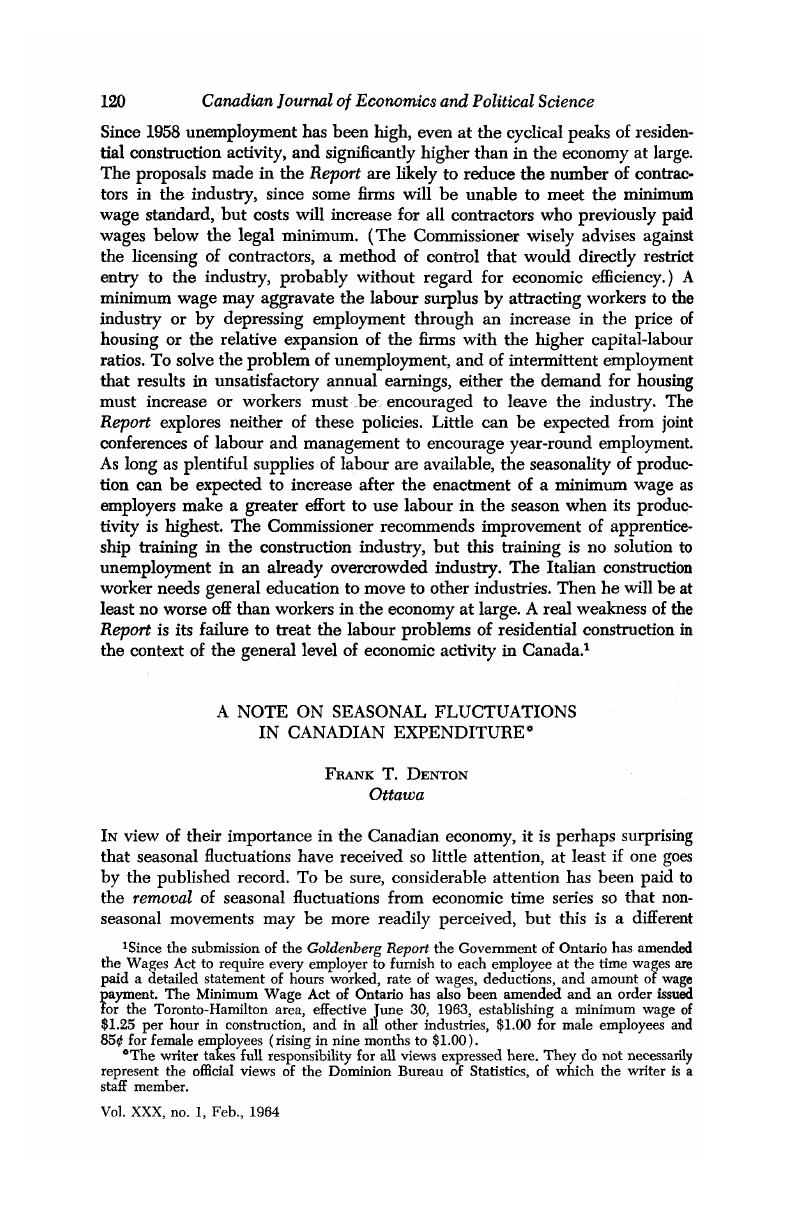No CrossRef data available.
Published online by Cambridge University Press: 07 November 2014

The writer takes full responsibility for all views expressed here. They do not necessarily represent the official views of the Dominion Bureau of Statistics, of which the writer is a staff member.
1 See “Seasonal Unemployment in Canada,” Labour Gazette, LX, 1960 Google Scholar, in three parts: 444–456 (May); 584–592 (June); and 694–701 (July). See also the testimony by Gil Schonning and F. J. Doucet, representing the Economics and Research Branch of the Department of Labour, before the Special Committee of the Senate, Proceedings (Ottawa, 1961), no. 16.Google Scholar
2 Hartle, Douglas, “Seasonal Unemployment in Canada, 1951–7,” this Journal, XXIV, no. 1, 02, 1958, 93–8.Google Scholar
3 Seasonal patterns for selected series are displayed, primarily for illustrative purposes, in Crozier, R. B. and Darcovich, W., “Time Series Analysis by Electronic Computers: A Report on Some Recent Applications at the Dominion Bureau of Statistics,” this Journal, XXVIII, no. 1, 02 1962, 127–46.Google Scholar This paper presents a good discussion of DBS seasonal adjustment practices and references to some of the technical literature in this area.
4 All figures are taken from DBS, “National Accounts, Income and Expenditure, Fourth Quarter and Preliminary Annual, 1962.” Since the seasonally adjusted series are published at annual rates they had to be divided by 4 to make them comparable with the unadjusted series.
5 The original series may be, interpreted here as either the seasonally adjusted or the unadjusted series since their averages are the same. It is DBS practice to constrain the seasonally adjusted figures so that over the four quarters of any calendar year tiieir sum (or their average, if they are at annual rates) is equal to the sum of the unadjusted figures. This, of course, has the effect of making the seasonal deviations sum to zero over the calendar year.
6 Except for division of all terms by a constant, this procedure is equivalent to expressing the calculated variance of x as the sum of the calculated covariances of x with each of its components. For a more thorough discussion of the procedure, or variants of it, see Denton, Frank T., “Some Techniques for Analyzing a Set of Time Series Subject to a Linear Restriction,” Journal of the American Statistical Association, 58, no. 302, 06, 1963, 513–18.CrossRefGoogle Scholar
7 Note, though, that the import component has a negative sign in columns (11) and (12) not because its movements are, on balance, opposite to those of the total, but because imports appear as a deduction in the calculation of GNE. In all other columns of the table, imports are treated as a positive series like any other series.